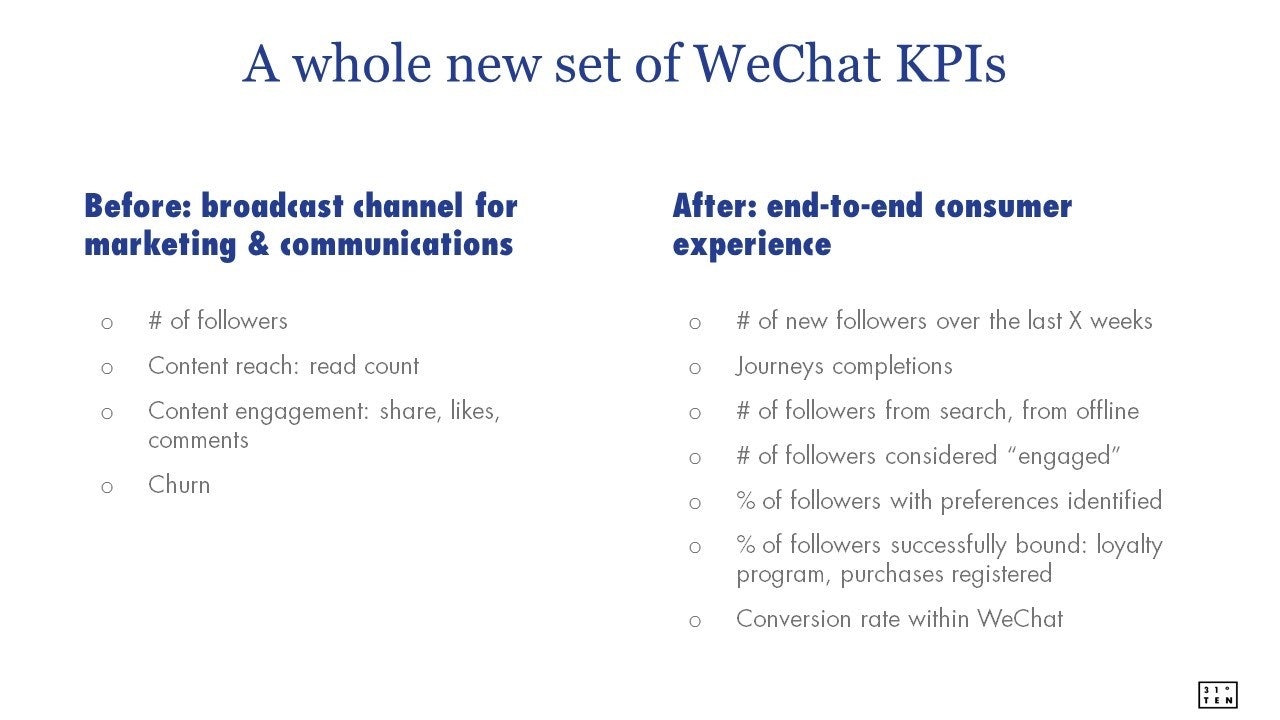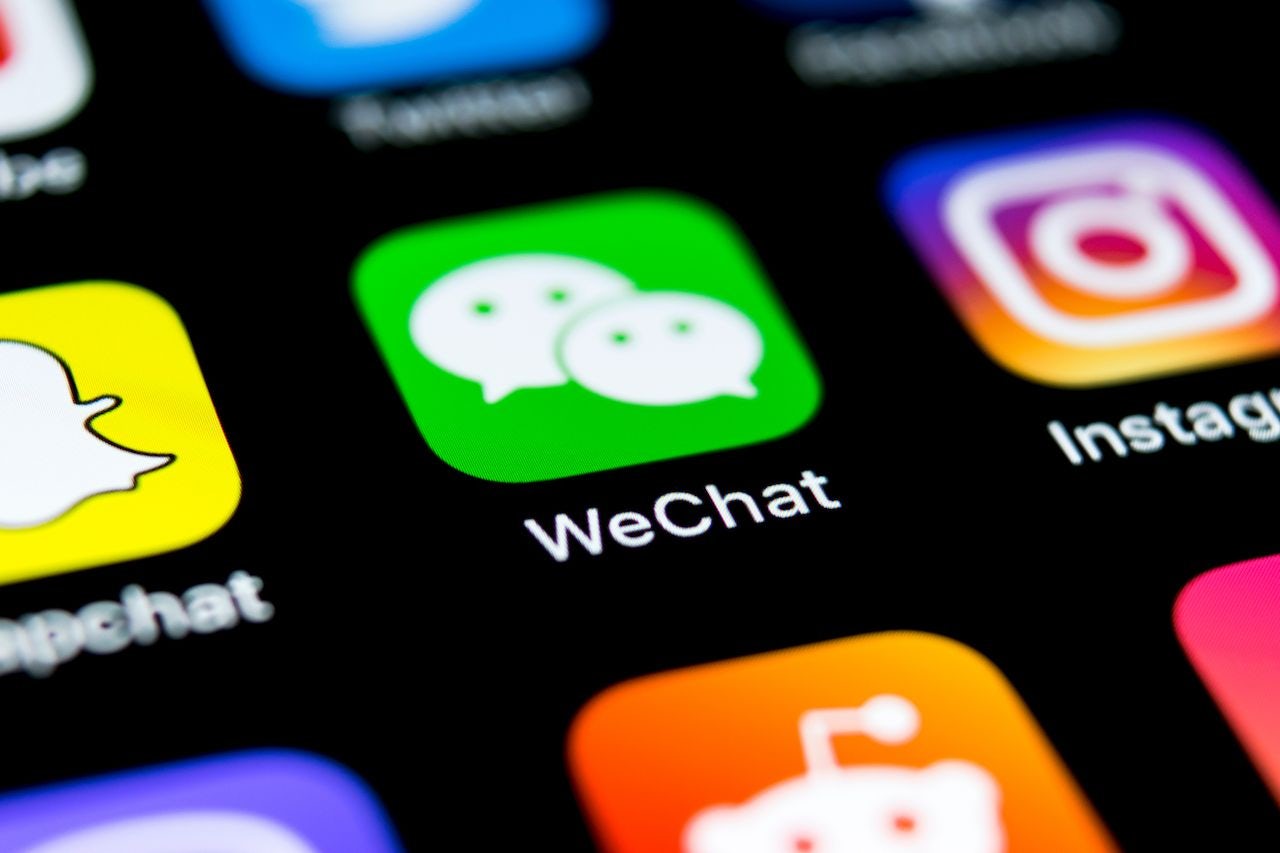WeChat launched numerous changes to its ecosystem over the last two years, releasing an explosion of mini-programs, new features (WeChat 7.0, search features, brand zone, a new subscription folder layout, etc.), an increase in e-commerce feature — and met with a further decline in content-reading rates.
This has undoubtedly made it difficult for brands and marketers to keep up and adapt to Tencent’s ever-changing channel. Here’s a sophisticated look at what premium brands need to supercharge their marketing strategies in 2019:
1. WeChat articles don’t need to be your primary content engagement channel#
Marketers know that, as open rates for WeChat articles reach record lows, it's increasingly difficult to cut through the noise. Last year’s strategy was to create better and more engaging content. This year, brands should leverage the new content formats that WeChat has to offer -- an increasing number of frequent publishers on WeChat are turning to mini-programs to keep their readers engaged and to offer richer forms of content. Mini-programs are also a great vehicle for real-time engagement and events such as live streaming.
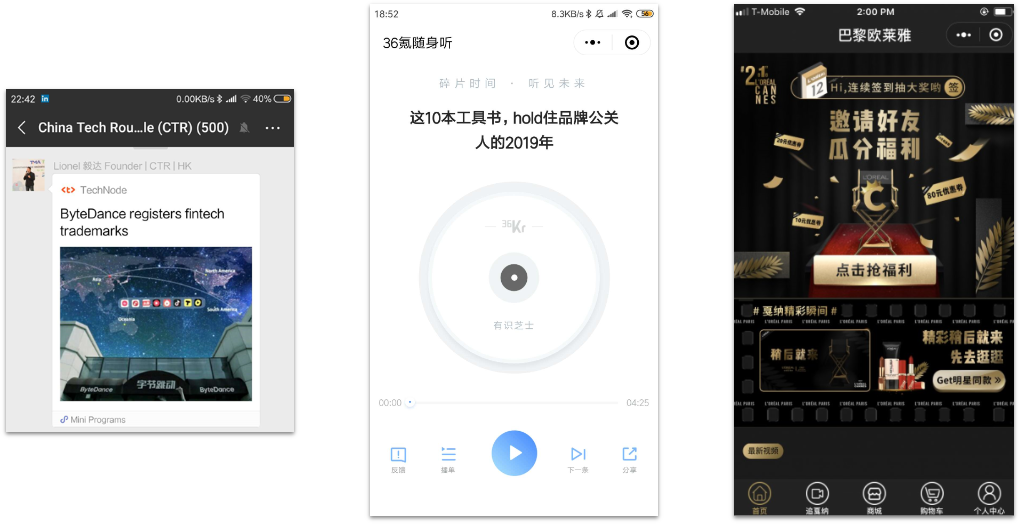
2. Fully leverage WeChat marketing automation#
There are different uses for marketing automation on WeChat. Brands can use these functions when engaging with new followers as well as retaining existing ones.
The first 48 hours after gaining a new follower are critical, as brands can send the new follower as many as five messages during that time. Use that window as an opportunity to engage and provide key-value services to the new follower through a "welcome journey." This is particularly important if you need your customers to identify themselves and bind their WeChat account to benefit from membership/VIP services, loyalty programs, store appointments, order management, etc. You can also use this window to learn about your followers and send them relevant content.
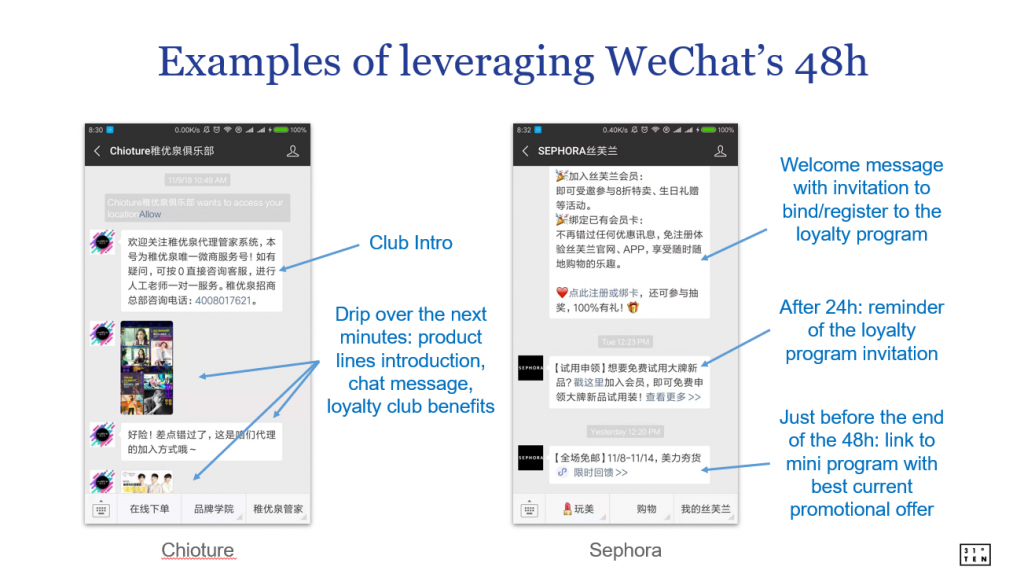
Engage in real-time. The WeChat follower's attention span is very short. The engagement rate for sending a survey after an action (follow the account, click a menu item) is 41% higher when sent within 2 seconds versus 30 seconds.
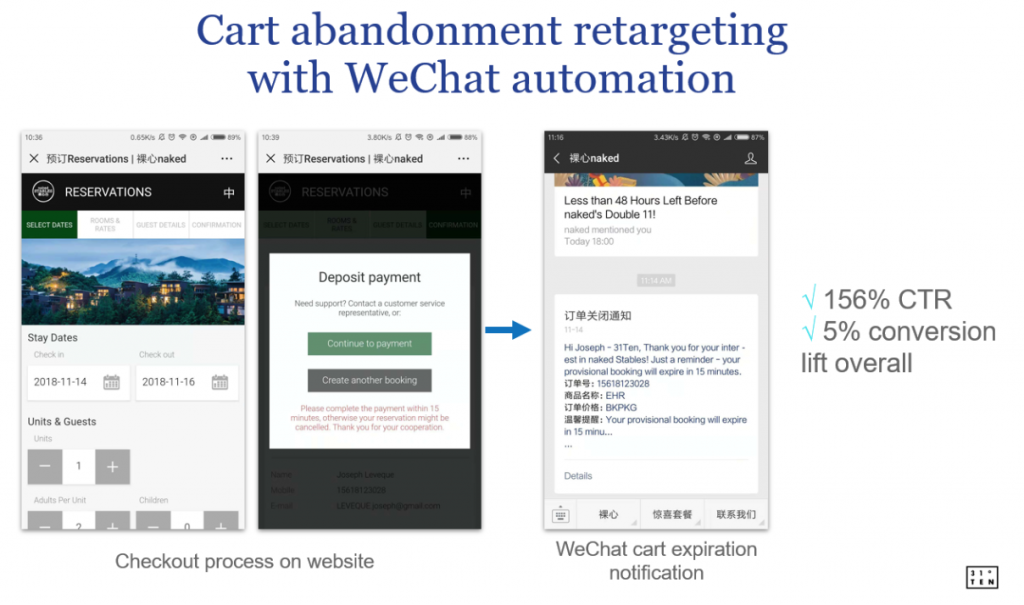
Use WeChat templated messages to retarget users. For example, you can send a timely cart abandonment notification for your brand.com e-commerce visitors to lift your conversion rates.
3. Dominate WeChat search results: Use the brand zone for a comprehensive brand introduction#
The WeChat brand zone, a spot reserved at the top of the WeChat search page where consumers can directly access official brands and their entities in the ecosystem, such as official accounts, mini-programs, or a store locator. The feature was introduced in early 2018, yet too few brands have implemented it properly, if at all. Search is a primary source of follower acquisition for premium brands.
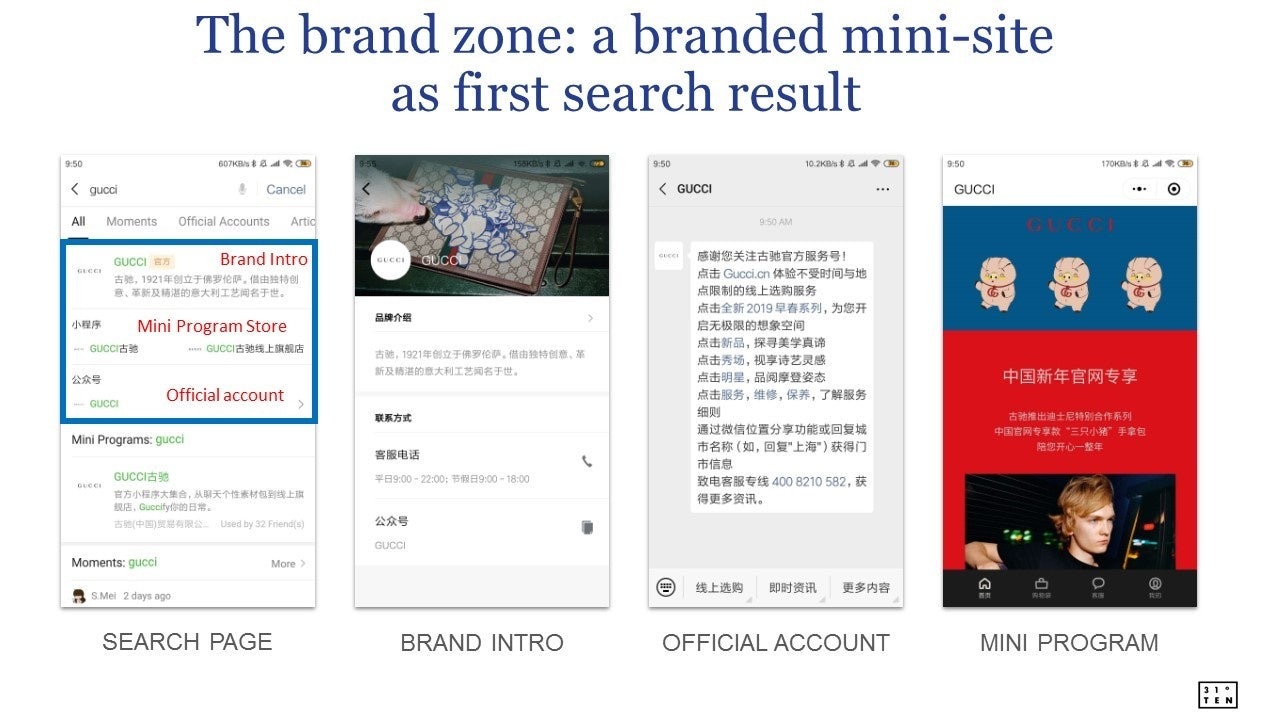
The brand zone is a key opportunity for brands to take control of the search function and offer users a quick entry point to the WeChat ecosystem: a brand’s official account, mini-program, store locator, etc. Moreover, since it is free to open (unlike Chinese search engines’ brand zones), it should be considered among the WeChat setup basics for premium brands.
The brand zone intro also functions as a complete mini-site. Through that, you can register your stores and add a comprehensive introduction to improve searchability.
4. Use WeChat as a hub for a seamless omnichannel customer experience#
Your WeChat account is the root identifier for your customers to associate with the brand in China, and it’s the primary channel for you to identify your customers. It enables a luxury brand to connect with customers through a website, offline store, or third-party app – thus, it’s important to have touchpoints at these locations for WeChat users to connect. It’s also important to remain consistent in engagement and offers across channels.
Still, too few premium brands are fully leveraging this ability to connect with customers. According to L2's Digital IQ Beauty China 2018, only a fifth of upmarket beauty brands with a Tmall loyalty program offered a similar program through WeChat as well.
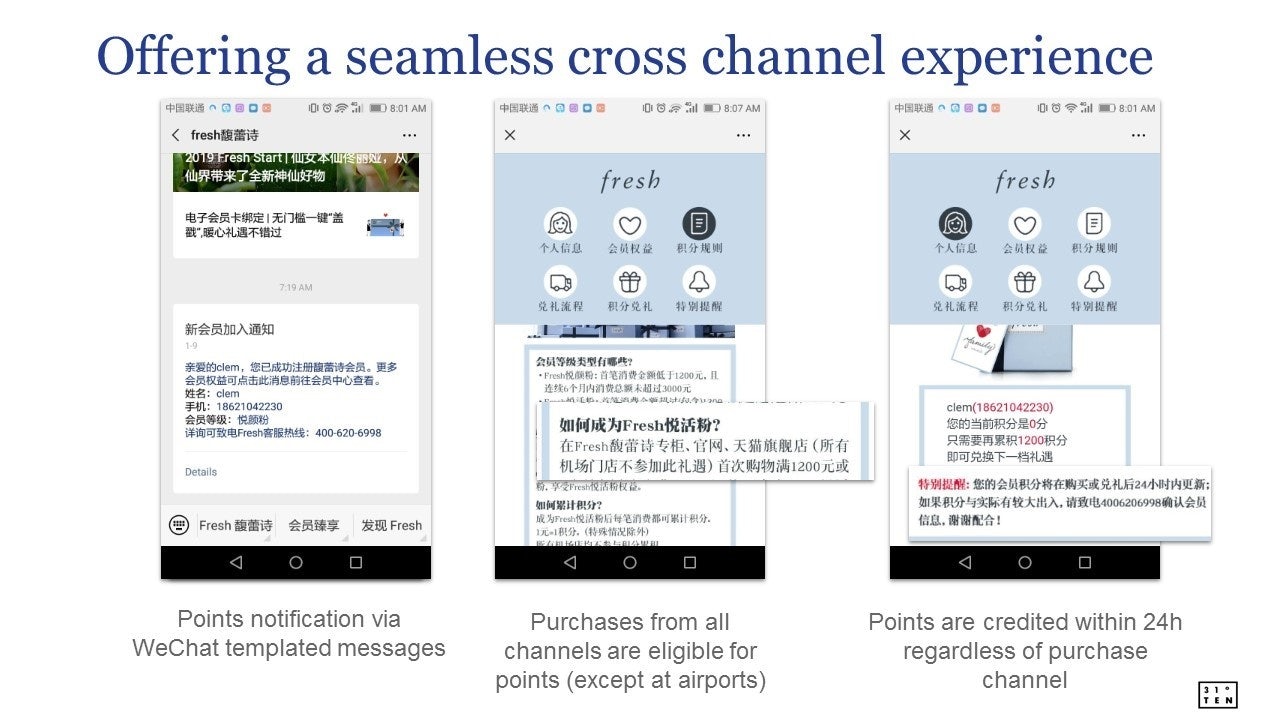
5. Shift WeChat KPIs away from pure reach and engagement#
Lee Mack, head of digital transformation at Naked Group, shared at the last Shanghai CHina CHat conference that broadcast KPIs are falling short to capture the full potential of WeChat performance. Instead of just reads, likes and the number of followers, brands should track the proportion of engaged followers (more than X actions over the last X months), followers successfully identified as customers, and the conversion rate within WeChat.
